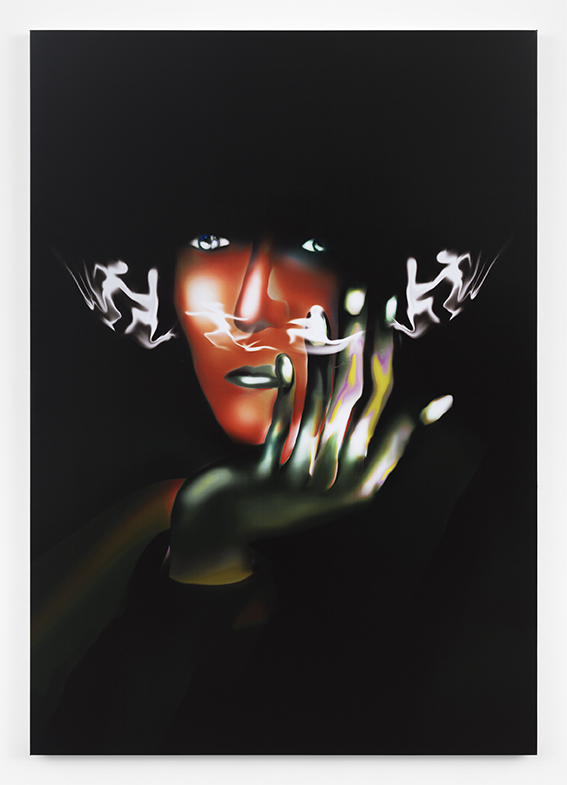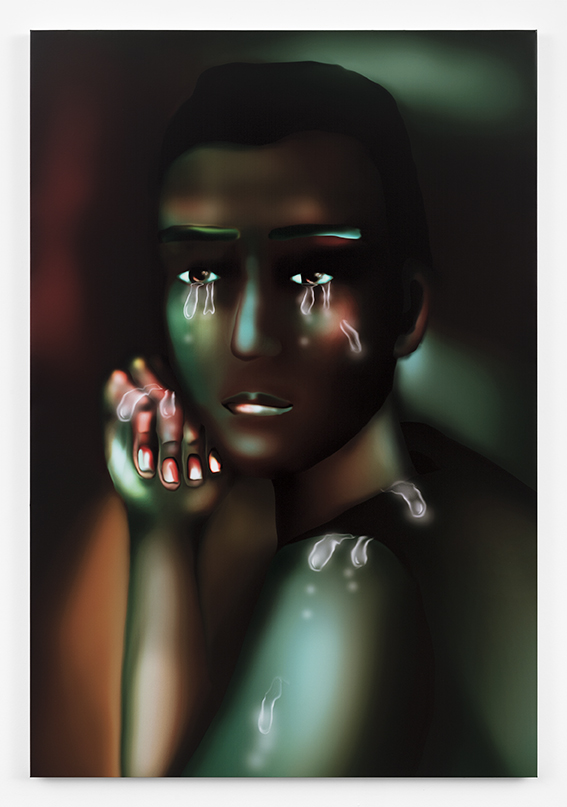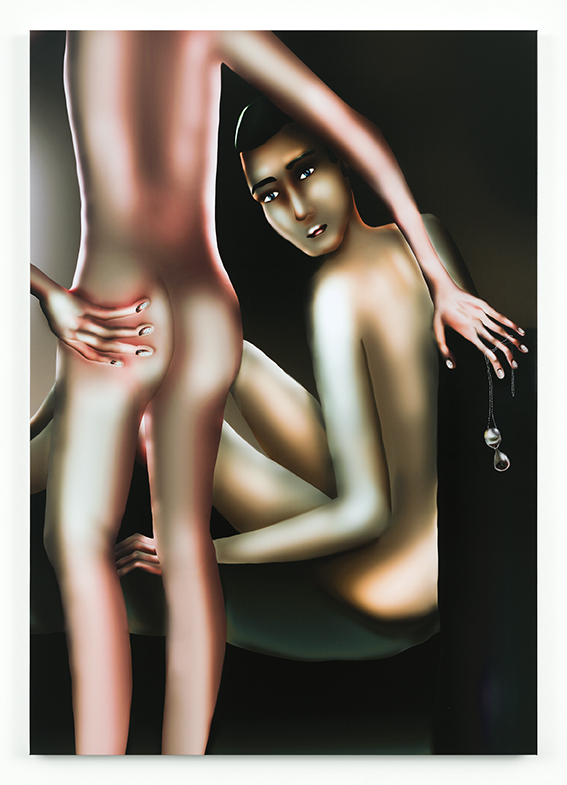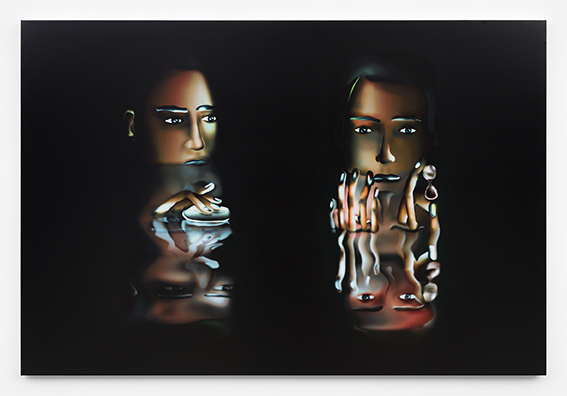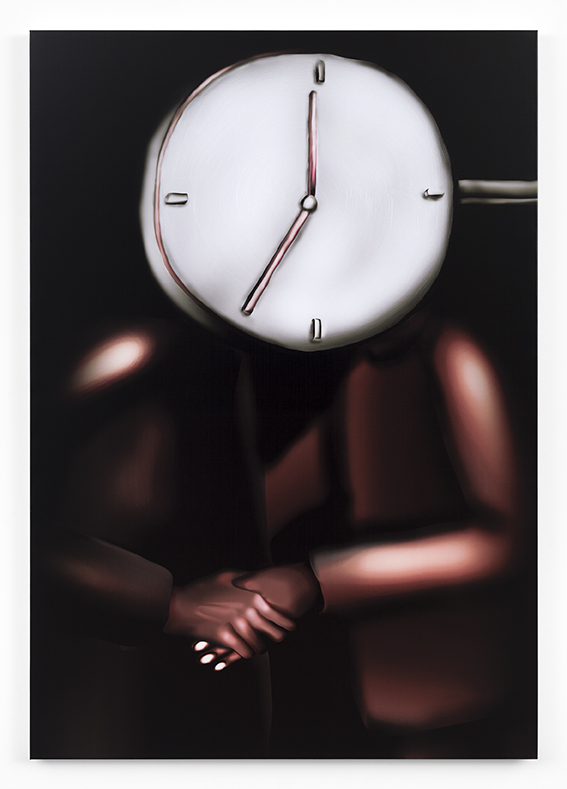Louisa Gagliardi – Notes for later
Louisa Gagliardi
Notes for later
| (Past) | 12.01.201712.01.17 — 11.02.201711.02.17 |
|---|---|
| (Gallery) | Rue de Livourne 32 Livornostraat |



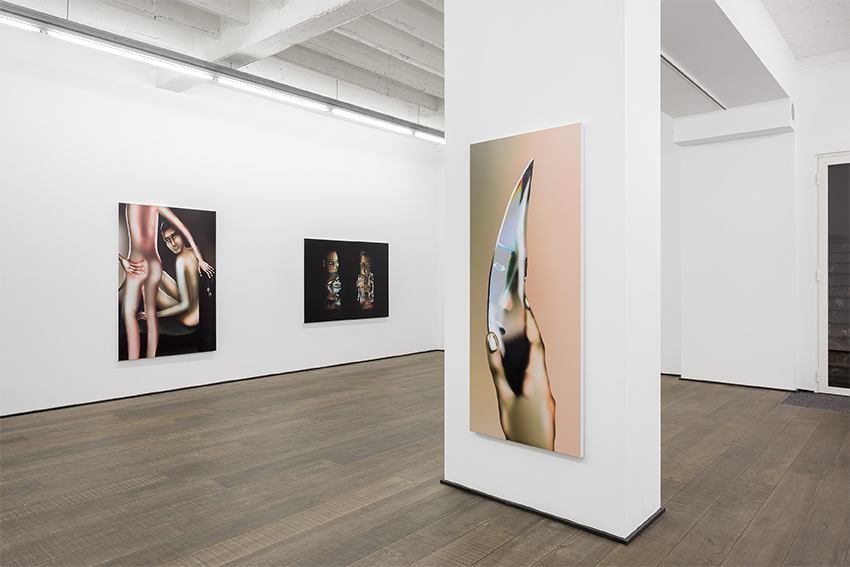
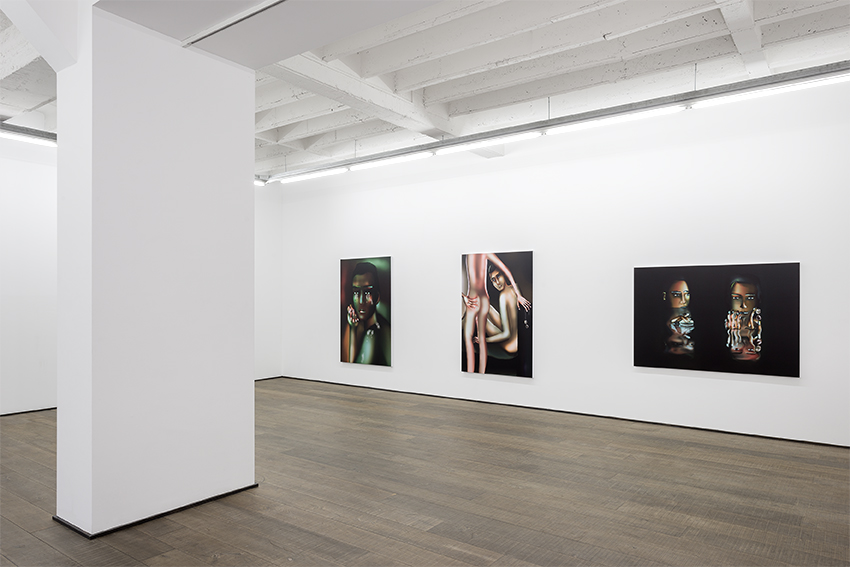

(01/06)Exhibition views
What does she do at night? She reflects, her body backlit in digital glow. She wanders in and out of consciousness. Ghostly shapes appear, dancing around a formless black room. Bodies move slowly, taking on evasive shapes – like liquid chrome, shapeshifting in the night.
For her first solo exhibition at rodolphe janssen, Louisa Gagliardi asks us to ponder the anxious, electric solitude of nighttime, that liminal zone between sleep and scrolling through your phone one last time.
The subjects of Gagliardi’s paintings confront restlessness as they pose idly: Two faces stare in opposite directions, perhaps in a disconnected bond of mutual, solitary interneting. Elsewhere, more obscure scenes unfold. An androgynous figure shimmers on all fours in a dark pasture; is this a glimpse into an emerging dreamscape? Or a lucid vision of vulnerability?
Restless nights lead to self-reflection. In the safe confines of a darkened room, the lives of others open up. How should a person be? How does a person represent themselves as the person they want to be? Motifs of reflection inflect nearly every work in the exhibition, as subjects strain to see themselves through the gaze of others. They glimpse each other through lenses. They ponder the effects of phosphorescent orbs on the darkly mirrored surfaces of water. They stare at themselves worriedly through shards of glass.
Gagliardi hails from a design background, having worked commercially on commissions for L’Officiel, Kenzo, and Mousse Magazine among others. Her artistic process in creating these paintings first appears to closely follow design parameters, but radically departs from this schema once her screen mock-ups
take physical form with the entry of extraneous materials. Varnish, gel medium, and nail polish add texture to suspiciously smooth surfaces, their fluid digital quality subverted by painterly interventions. And herein lies the crux of the works in this exhibition: We move away from the slippery darkness of the digital
when we allow our fingerprints to corrupt the glassy sheen of screens.
Bitsy Knox
Artworks
(07)-
![Louisa Gagliardi, Still sleeping, still dancing]()
(Artist) Louisa Gagliardi (Title) Still sleeping, still dancing (Year) 2016 (medium) Gel medium, Nail polish, Ink on PVC (Dimensions) 165 x 115 cm;
65 x 45 1/4 in(Reference) LGag008 -
![Louisa Gagliardi, Husbands and Neighbors]()
(Artist) Louisa Gagliardi (Title) Husbands and Neighbors (Year) 2016 (medium) Gel Medium, Ink on PVC (Dimensions) 121 x 130 cm;
47 5/8 x 51 1/8 in(Reference) LGag002 -
![Louisa Gagliardi, Parallax]()
(Artist) Louisa Gagliardi (Title) Parallax (Year) 2016 (medium) Gel medium, Nail polish, Ink on PVC (Dimensions) 170 x 76 cm;
66 7/8 x 29 7/8 in(Reference) LGag006 -
![Louisa Gagliardi, Maze]()
(Artist) Louisa Gagliardi (Title) Maze (Year) 2016 (medium) Gel medium, Nail polish, Ink on PVC (Dimensions) 170 x 115 cm;
66 7/8 x 45 1/4 in(Reference) LGag004 -
![Louisa Gagliardi, Decision to]()
(Artist) Louisa Gagliardi (Title) Decision to (Year) 2016 (medium) Gel medium, Nail polish, Ink on PVC (Dimensions) 165 x 115 cm;
65 x 45 1/4 in(Reference) LGag003 -
![Louisa Gagliardi, Its mine I spend it]()
(Artist) Louisa Gagliardi (Title) Its mine I spend it (Year) 2016 (medium) Ink on PVC (Dimensions) 115 x 170 cm;
45 1/4 x 66 7/8 in(Reference) LGag007 -
![Louisa Gagliardi, Powerful relief]()
(Artist) Louisa Gagliardi (Title) Powerful relief (Year) 2016 (medium) Gel Medium, Ink on PVC (Dimensions) 165 x 115 cm;
65 x 45 1/4 in(Reference) LGag005
